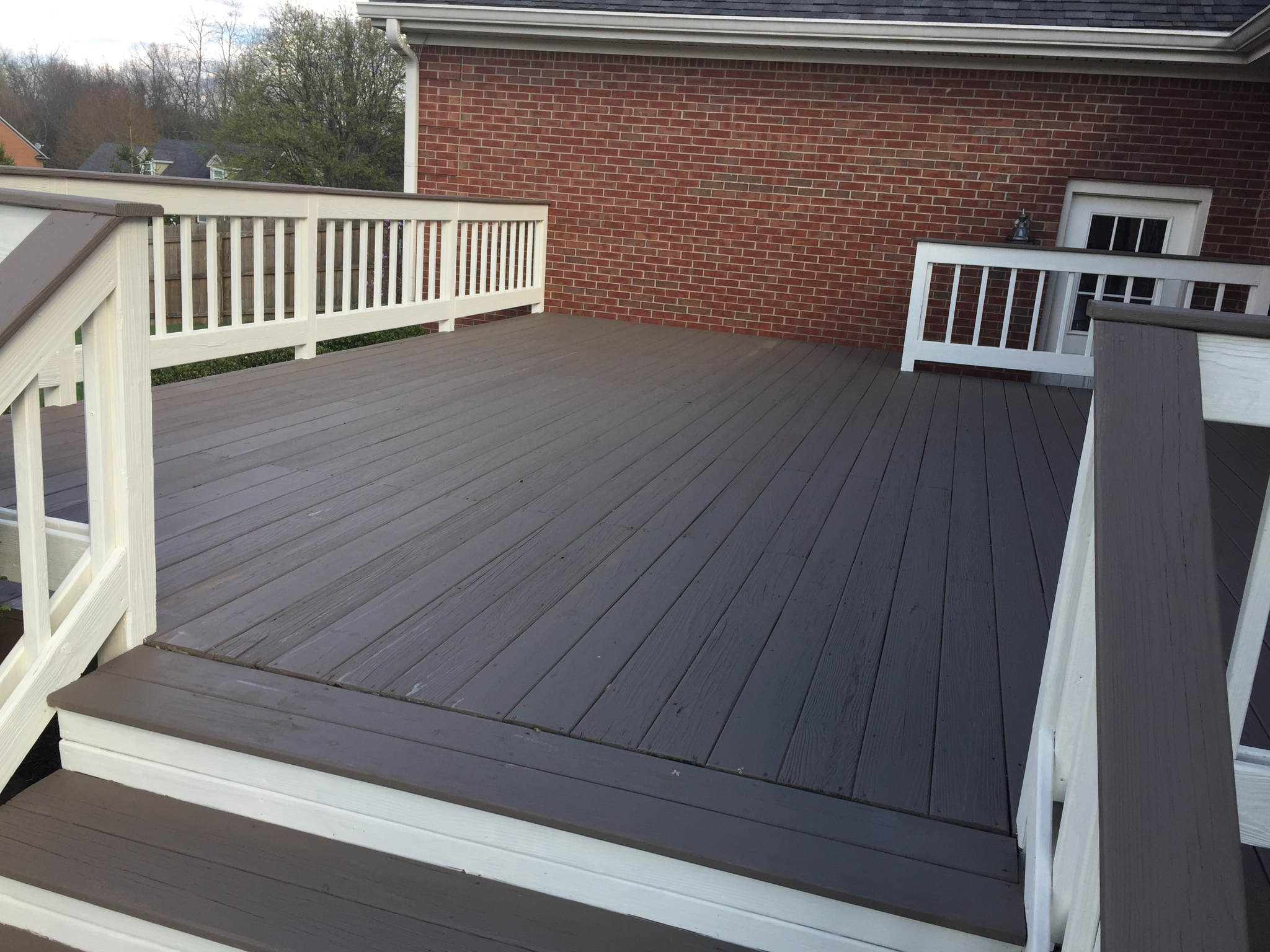
A Homeowner’s Guide to Cleaning, Sealing, Staining, or Coating Decks
Newly Constructed Pressure Treated Decks
· New wood must weather (allowing the chemicals to dry out) in order for a stain to penetrate wood and deck coatings to adhere.
· It usually takes about 3-6 months of weathering for pressure treated wood but some wood can take much longer.
· Do a water test to see if wood will accept a stain. A deck will accept a stain if you pour a glass of water on the deck and if it absorbs into the deck within 5 to 8 seconds. The deck needs to weather longer if the water sits on top of the deck or takes longer to absorb.
· If new decks sit longer than 3-6 months before a first treatment, they may begin to dry out too much and wood fibers may begin to peel away from the deck. If this happens, those peeling wood fibers may cause the sealant, stain, or coating to peel away as well.
Old Decks
· If the deck stain is in good shape with very little peeling, then clean the deck, sand any peeled spots to assure soft wood is removed, and let it dry for 2 to 4 days. Apply your stain to specifications.
· Decks should be maintained yearly by testing to see if the coating is still repelling water. If it is not repelling water, then the deck should be re-stained.
· If the deck is in poor shape with peeling, mildewed, and soft wood, then extra steps need to take place to assure the stain performs to its ability. Strip the old stain by using Stain and Sealer Remover (made by Sherwin Williams) and then applying Revive (also by SW) to neutralize the toxins in the Stain and Sealer Remover. Then use a DeckBrite solution to scrub the deck boars and handrails to removed dead wood fibers and restore the color of the wood. Clean the deck thoroughly with water to remove all chemicals. Replace wood that is in bad shape. Sand the top layer of wood that is soft.
· Let wood dry for 2 to 4 days and apply stain per specs.
How long should a stain last?
A good rule of thumb: the more pigment in the product the better it will protect against the UV rays of the sun.
· The wood under clear sealers will start turning grey after 6 months and should be redone yearly to give the maximum protection.
· Toners will start fading after one year and should be redone within 1 to 2 years to give the maximum protection.
· Semi-transparent and Semi-solid stains will start fading in 1 ½ years and should be redone within 1 to 2 years to give the maximum protection.
· Solid color stain will start fading in 2 years and should be redone within 2-3 years to give maximum protection.
Note that different manufactures recommendations will vary. Refer to the manufacturer data page for product details.
In General
· Decks are a horizontal surface on which rain, sleet, and snow will sit for periods of time.
· People walk on decks causing pressure.
· Mildew will also form on the deck, especially if there is an outdoor carpet on the deck.
· These are some of the reasons wood will split or crack allowing water penetration and therefore some edge pealing. Stains cannot prevent this from happening but could decrease the amount of cracking and pealing by shedding away water.
· Maintain decks every year by cleaning the deck. Use a pressure washer or garden hose with a nozzle and remove all mold or mildew with a watered-down bleach solution or a pre-mixed cleaning solution you can buy at Lowe’s or Home Depot.
· Mold is a living spore that feeds on moisture. Unless you get rid of the moisture source, mold will eventually come back. Mold will attack the stain fill and lessen the life of the stain.
· Clean your deck yearly to help reduce mildew issues.
· Pressure treated wood can be stained even though the deck is new. Do an absorbency water test (see above). The wood may have been exposed in a lumber yard-the treatment may be gone.
· Understand that you might have small amounts of peeling every year even if the deck was stained properly. Scrape, sand, clean and touch up those areas. It is not uncommon.
· Many people ask why one board peals and the one next to it is fine, yet they were both prepped and stained at the same time. Understand the boards could have come from a different tree or a different part of the tree or even a different lumber yard. This means one piece could be harder than the next. Therefore, it will not accept stain as deep or it may crack more easily. This would then allow water penetration under the wood.
· Once again yearly maintenance is needed.
For more information on Decks stains and the different deck coating systems available to you (and the differences between them), see our page on Deck Staining or Deck Coating, and on How Choosing a Stain Color is Tricky.

